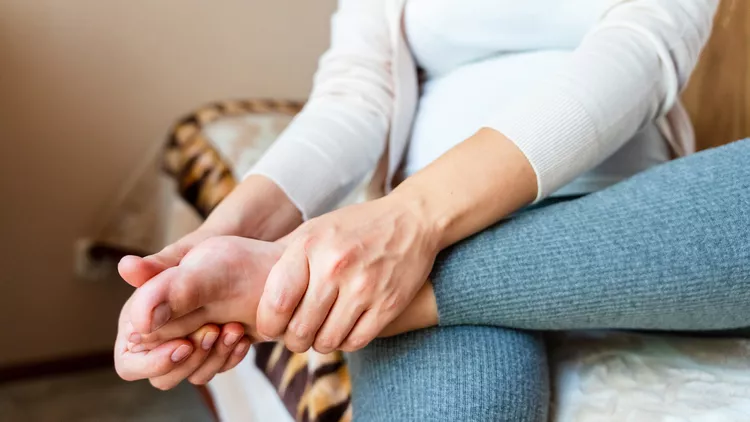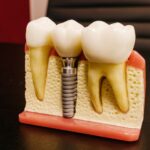A pincer toenail, sometimes referred to as a trumpet nail, is a condition that can be as uncomfortable as it is unsightly. This nail disorder usually occurs when the sides of the nail start curving inward, creating a “pinched” appearance. Left untreated, it can lead to pain, infections, and difficulty performing everyday activities.
If you’re dealing with a pincer nail—or want to learn how to prevent one—this blog will help you understand its causes and explain what steps you can take to manage and treat it. We’ll also answer some frequently asked questions to clear up common concerns.
What Is a Pincer Toenail?
Before diving into the causes, let’s define the condition more clearly. A pincer toenail is a type of nail deformity where the lateral edges of the nail curve excessively toward the nail bed. This curvature can increase with time, potentially pushing into the surrounding skin.
Pincer toenails are most commonly seen in the big toe, although they can develop on other toes as well. The condition ranges from mild to severe, with some cases requiring medical intervention.
If your toenail curves so much that it’s starting to dig into your skin, it’s vital to act early to minimize complications.
What Causes a Pincer Toenail?
Understanding the root causes of a pincer toenail is the first step toward effective treatment. Here are the most common factors:
1. Genetics
Your genes play a big role in the structure of your toenails. If someone in your family has pincer nails, you’re more likely to develop them as well. The hereditary factor might be the primary reason why some people experience this condition despite proper nail care.
2. Tight Footwear
Consistently wearing shoes that squeeze your toes together is a major risk factor for pincer nails. Narrow or too-tight footwear puts pressure on the nails, forcing them to curve inward over time. This is especially common in high heels or pointed shoes, which often prioritize fashion over comfort.
3. Aging
Aging leads to changes in the shape and thickness of nails. Over time, toenails may begin to compress and curve inward as the nail matrix (where new nail cells form) grows less effectively. Combine this with reduced circulation in older adults, and the risk of pincer nails increases.
4. Trauma to the Nail
A history of nail trauma—whether caused by an accident, repetitive pressure due to physical activity, or improper nail trimming—can trigger the development of a pincer nail. Damaged nails tend to regrow abnormally, increasing the likelihood of excessive curvature.
5. Underlying Medical Conditions
Certain health conditions are linked to pincer toenails. For instance:
-
-
- Fungal infections: Can thicken and distort the toenail, leading to increased curvature.
- Psoriasis: Causes thickening and misshaping of nails.
- Arthritis: Foot bone changes resulting from arthritis might indirectly affect nail growth patterns.
-
6. Improper Nail Care Practices
Cutting your toenails too short, especially at the edges, encourages the nail to grow into the skin rather than outward. This is why proper nail trimming technique is so important.
Recognizing the Symptoms of a Pincer Toenail
Pincer toenails can start subtly, but the symptoms become more pronounced the longer the condition persists. Watch out for the following signs:
- Nails with an exaggerated inward curve on both sides.
- Pain or discomfort, especially when wearing shoes.
- Redness or swelling around the affected nail.
- Difficulty trimming the nail due to its shape.
- Skin irritation or sores at the edges of the nail.
If you notice any of these symptoms, take action to prevent further progression.
How to Flatten a Pincer Nail
Wondering if pincer toenails can be corrected? The good news is, there are several ways to address the condition. Here’s how to flatten a pincer nail:
1. File and Trim Regularly
Keep your nails at a manageable length and gently file their edges to reduce the severity of the curve. Make sure not to cut them too short, as this can worsen the issue.
2. Wear Proper Footwear
Switch to shoes with a wider toe box that provide enough space for your toes to spread naturally. This helps reduce the pressure pushing inward on the toenail.
3. Use Orthotics
Custom orthotics or toe spacers can help realign your toes and reduce stress on the nail. Many find relief with devices specifically designed to minimize nail curvature.
4. Moisturize and Protect
Use creams or oils to keep your toenails flexible, which can help prevent cracking or further curling. If your skin around the nail is sensitive, use protective bandages to reduce irritation.
5. Seek Professional Treatment
If the condition is advanced or causing significant pain, consult a podiatrist or dermatologist. They may suggest treatments like:
-
-
- Nail Bracing: Similar to braces on teeth, this corrects the nail’s curvature over time.
- Partial Nail Removal: A more permanent solution for severe cases.
- Prescription Antifungals: For cases caused by fungal infections.
-
Preventing Pincer Toenails
Prevention is often simpler and less painful than treatment. Incorporate these habits to minimize the risk of developing pincer toenails:
- Trim nails straight across instead of rounding the edges.
- Avoid tight, narrow, or high-heeled shoes as much as possible.
- Keep your feet clean and dry to prevent fungal infections.
- Inspect your nails regularly for early signs of curvature or injury.
- Prioritize foot health, especially if you have a family history of nail disorders.
FAQS
Can pincer toenails heal on their own?
Unfortunately, pincer toenails rarely improve without intervention. The earlier you address the issue, the easier it will be to manage.
Are pincer toenails painful?
They can be! Mild cases may only cause discomfort, but severe pincer nails might lead to significant pain and even infections if left untreated.
Can fungal infections cause pincer nails?
Yes, fungal infections can thicken and distort the nail, increasing curvature. Treating the infection early is crucial to prevent complications.
What treatments work best?
Mild cases can often be managed at home with proper nail care and footwear adjustments. However, severe cases may require professional medical interventions like nail bracing or partial removal.
Take Control of Your Nail Health
Pincer toenails may be frustrating, but they’re not unbeatable. With proper nail care, good footwear choices, and timely medical attention, you can improve the condition or prevent it from developing altogether.
If you’re struggling with a pincer toenail, don’t wait—take steps today to protect your comfort and mobility!







